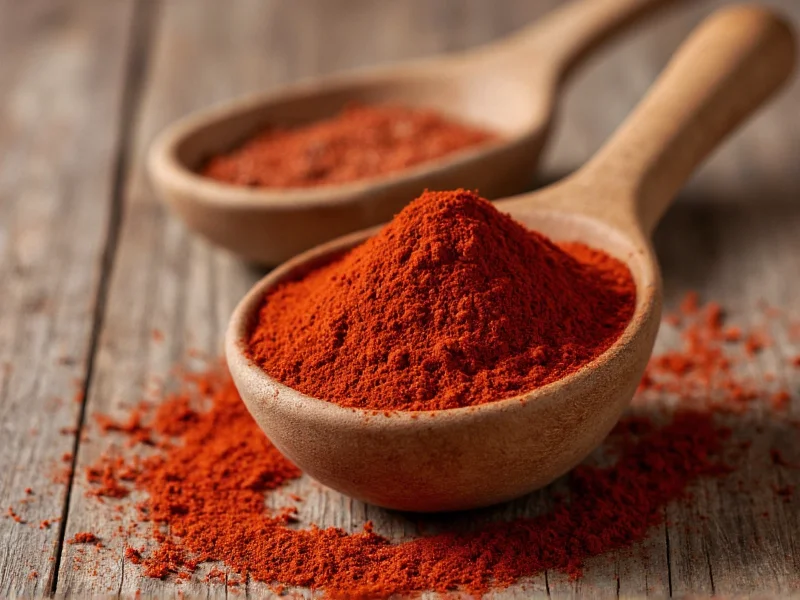When you search for mace is a spice, you're likely seeking confirmation about this often misunderstood ingredient. Many confuse culinary mace with the self-defense spray of the same name, but in the kitchen, mace refers exclusively to the dried lacy membrane that encases the nutmeg seed. This distinctive spice has been prized in global cuisines for centuries, particularly in Indian, Middle Eastern, and European cooking traditions.
What Exactly Is Mace Spice?
Mace originates from the Myristica fragrans tree, native to the Banda Islands in Indonesia. The fruit of this tree contains a single seed (nutmeg) surrounded by a crimson-colored web-like covering called the aril. When harvested, this aril is carefully separated from the nutmeg seed, then dried until it transforms from bright red to a distinctive amber-orange color. This dried aril becomes the spice we know as mace.
Unlike many spices that come from seeds, roots, or bark, mace is unique in that it's derived from this specialized membrane. The drying process concentrates its essential oils, giving mace its characteristic aroma and flavor. High-quality mace should have a strong, pleasant fragrance and a deep orange-red color.
Mace vs Nutmeg: Understanding the Relationship
Since both spices come from the same fruit, many wonder is mace the same as nutmeg. While related, they're distinct spices with different flavor profiles:
| Characteristic | Mace | Nutmeg |
|---|---|---|
| Origin on Fruit | Red aril surrounding the seed | The seed itself |
| Flavor Intensity | More delicate, subtle | Stronger, more robust |
| Flavor Notes | Sweet, warm, citrusy, with floral hints | Earthy, woody, more pungent |
| Color Impact | Imparts golden-orange hue | Less color impact |
| Price | Generally more expensive | More affordable |
Historical Journey of Mace Spice
Mace has a rich history dating back to ancient times. Originally exclusive to the Maluku Islands (also known as the Spice Islands) of Indonesia, mace became one of the most sought-after spices during the Age of Exploration. European powers fiercely competed for control of the mace trade, with the Dutch going to extreme lengths to maintain their monopoly.
By the 18th century, mace had spread to other tropical regions including Grenada, Sri Lanka, and Malaysia, where it's still cultivated today. In medieval Europe, mace was considered a luxury item reserved for the wealthy, often used to flavor meat dishes and preserve food before refrigeration.
Culinary Applications of Mace
Understanding how to use mace in cooking unlocks its full potential in your kitchen. Mace works beautifully in both whole blade form and ground powder:
- Whole blades: Ideal for infusing flavor into soups, stews, and braises. Add one or two blades to your dish during cooking and remove before serving.
- Ground mace: Perfect for spice blends, baked goods, and rubs. Use in place of nutmeg when you want a more subtle, complex flavor.
Chefs particularly value mace for its ability to enhance delicate dishes without overwhelming them. It's a key ingredient in:
- Classic béchamel sauce
- Spiced cakes and cookies
- Indian garam masala blends
- Dutch speculaas spice mix
- British meat pies and sausages
- Caribbean curries
Flavor Profile and Pairing Suggestions
The mace spice flavor profile is complex yet balanced. It offers warm notes of cinnamon and clove with subtle citrus undertones and a hint of black pepper. This versatility makes mace an excellent complement to:
- Dairy-based sauces (where its color enhances appearance)
- Poultry and pork dishes
- Root vegetables like carrots and sweet potatoes
- Fruit-based desserts
- Egg dishes including custards and quiches
When substituting mace for nutmeg, use about ⅔ the amount since mace has a more concentrated flavor. Conversely, if replacing mace with nutmeg, you'll need slightly more to achieve similar flavor intensity.
Proper Storage for Maximum Freshness
To preserve the delicate mace spice benefits and flavor, proper storage is essential. Whole mace blades retain their potency longer than ground mace:
- Store in an airtight container away from light and heat
- Keep whole blades for up to 2 years; ground mace for 6-12 months
- Freezing can extend shelf life but may affect texture
- Always check aroma before use—fresh mace should have a strong, pleasant scent
Substituting Mace in Recipes
If you're wondering about a mace spice substitute, several options exist though none perfectly replicate its unique flavor:
- Nutmeg (use 50% more than mace called for)
- Allspice (use ⅔ the amount)
- A blend of cinnamon and nutmeg (equal parts)
- Garam masala (for savory dishes)
For the most authentic results, seek out whole mace blades at specialty spice shops or online retailers that specialize in fresh spices. The quality difference between freshly ground mace and pre-ground supermarket varieties is significant.
Nutritional Profile and Potential Health Benefits
While primarily used for flavor, mace offers some mace spice benefits worth noting. Like nutmeg, mace contains essential oils, vitamins, and minerals:
- Rich in myristicin, which may support brain health
- Contains iron, magnesium, and manganese
- Has antioxidant and anti-inflammatory properties
- Traditionally used to aid digestion
As with all spices, these benefits are best realized when mace is consumed as part of a balanced diet rather than taken medicinally. Always consult with a healthcare provider before using spices for therapeutic purposes.
Common Misconceptions About Mace
Several myths persist about this valuable spice:
- Misconception: Mace and nutmeg are interchangeable in all recipes
Reality: While related, they have distinct flavor profiles requiring different usage considerations - Misconception: Mace is just ground nutmeg
Reality: Mace comes from a different part of the same fruit and has its own unique characteristics - Misconception: Mace is significantly more expensive because it's rare
Reality: The higher price reflects the labor-intensive harvesting process, not scarcity











 浙公网安备
33010002000092号
浙公网安备
33010002000092号 浙B2-20120091-4
浙B2-20120091-4